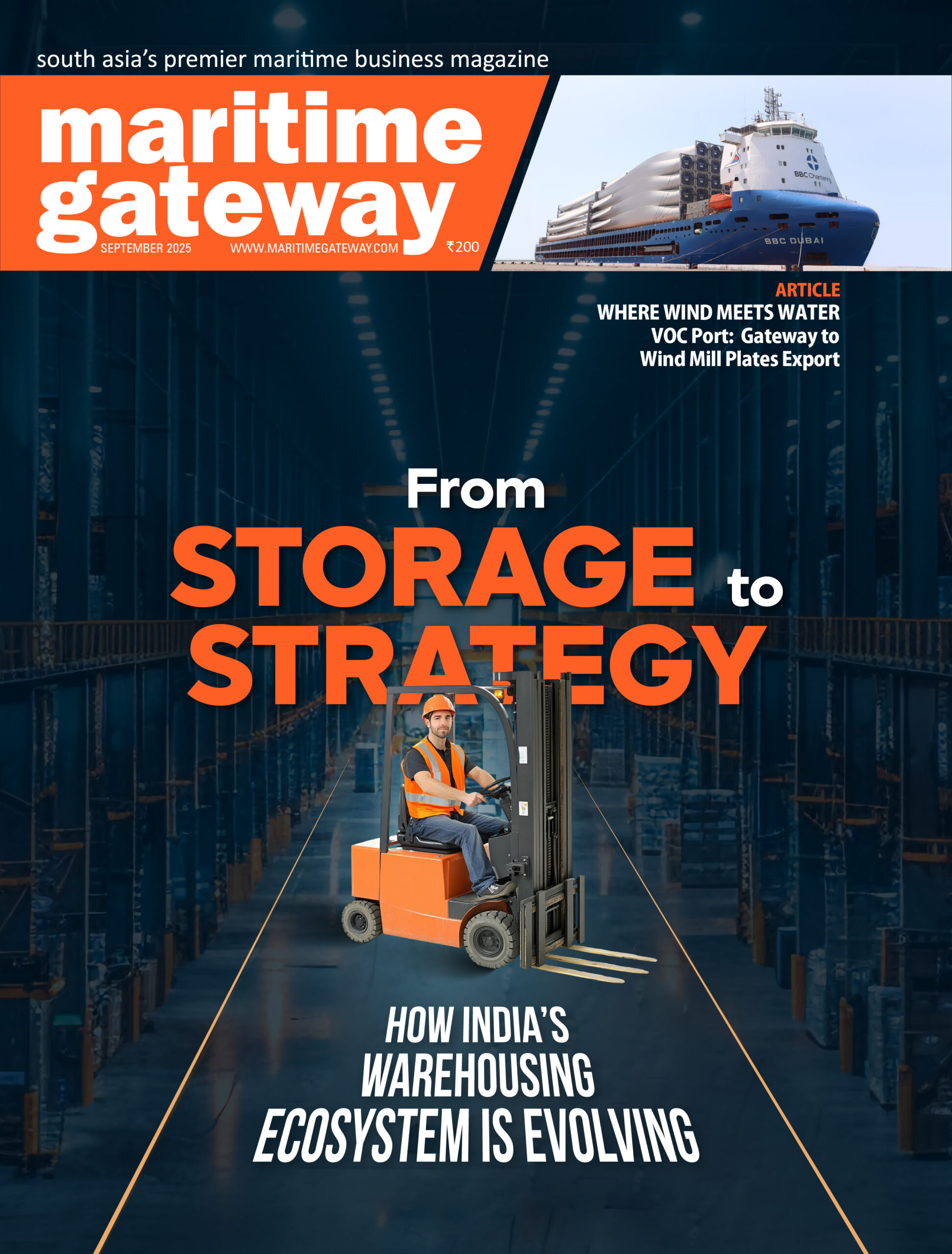When two of India’s respected logistics houses—JBS group and Jeena & Company—decided to merge in April 2024, the industry took notice. Not just because of the size and legacy of the firms involved, but because the merger was not born in a boardroom full of lawyers, but in a casual conversation laced with trust, shared values, and mutual vision.
Now, a year later, their story offers rich insights for an industry at the crossroads of transformation—highlighting how synergies must go deeper than spreadsheets, and how culture, clarity, and continuity matter as much as capital.
A casual conversation becomes a strategic milestone
The seeds of the merger were sown not in a formal pitch, but during a chance exchange at an industry event in New Delhi.
“It started as a casual chat between old friends,” recalls Samir J Shah, the patriarchal figure at JBS. “I mentioned to Cyrus Katgara, co-owner of Jeena & Company, that I was starting to think seriously about the future of our firm.”
At the time, JBS—a nearly 70-year-old company—was facing a common succession challenge. With daughters choosing careers in medicine; teaching etc, and long-standing clients and staff asking, “What happens after you?”, Samir needed to secure not just a legacy, but a future.
Enter Sam Katgara, Cyrus’s brother and co-leader at Jeena & Company.
“We’ve known Samirbhai for over 40 years,” says Sam. “What stood out was his clarity, the loyalty his clients and team had for him, and how closely our value systems aligned. It just felt right.”
And so began what both men describe as a handshake-first, paperwork-later journey—where trust, cultural synergy, and mutual respect laid the foundation for one of the most significant logistics mergers in recent years.
From handshake to integration: Beyond the legalities
What followed was not the typical merger process filled with layers of consultants and prolonged negotiations.
“In fact,” laughs Sam, “this was the first deal I insisted should be based on a handshake. We only signed the documents after we’d looked each other in the eye.”
That doesn’t mean the integration lacked structure. Once the decision was made, due diligence, compliance checks, and operational planning followed. But the leadership ensured that cultural fit remained the north star—a principle that would guide not just the merging of systems, but also of people.
Key steps in the transition:
Unified Operations: The teams quickly found a new headquarters—JBS Jeena House in Ahmedabad—which became a symbolic and operational home for the combined entity.
Systems Integration: Jeena’s technology-driven backend was adopted across the board, while JBS’s customs clearance systems were scaled to benefit Jeena’s national operations.
Employee Assurance: The merger was positioned not as a consolidation, but as a growth opportunity, with no layoffs and minimal disruption. “People didn’t leave because of the merger,” says Samir. “Those who moved on would have done so anyway.”
Synergies in Action: Customers, Capabilities, and Complementarity
From the outside, JBS and Jeena may have looked similar—both are legacy Indian logistics companies— but their operational strengths were deeply complementary.
“JBS was extremely strong in customs clearance,” says Sam, “while Jeena’s strengths lay in international freight forwarding and multimodal logistics. Together, we filled each other’s gaps.”
This synergy wasn’t just internal— it brought immediate gains for customers:
Deeper service offerings: Clients previously using JBS only for clearance could now access end-to-end freight solutions through Jeena’s global network.
Trust-led transitions: Long-time clients, some with 30-40 year relationships, expressed confidence that Samir’s judgment in the merger would benefit them. Not a single major account was lost.
Best-of-both SOPs: Forwarding operations followed Jeena’s framework, while clearance activity retained JBS’s local expertise, creating a hybrid operating model.
Post-merger priorities: New verticals and national ambitions
While most mergers take a year or more to stabilise, JBS and Jeena used the integration period to accelerate growth.
“We didn’t just merge teams, we built something new,” says Sam. “In two months, we had a new office, merged our systems, and launched new service lines.”
Key post-merger initiatives:
Cold chain expansion: A new vertical focused on pharmaceutical and temperature-sensitive logistics, including owned facilities in Andhra Pradesh, has positioned the merged entity as a leader in the cold chain segment.
We have our own facilities in Mumbai, Delhi, Ahmedabad and Bangalore
Defense Logistics: The team is exploring opportunities in defense and government contracts, aligning with India’s push for indigenous manufacturing and secure supply chains.
Value-Added Services: A new customs consultancy vertical is helping clients navigate evolving compliance challenges, including FTAs, GST structures, and Authorized Economic Operator (AEO) schemes.
“We’re not just moving boxes anymore,” says Samir. “We’re advising clients on how to survive and thrive in a complex trade environment.”
Lessons from the Frontline: What Makes a merger work?
Both leaders agree: culture makes or breaks a merger.
“Forget the financials for a second,” says Samir. “If the culture doesn’t align, the teams won’t align. And if the teams don’t align, nothing else will matter.”
Key Lessons from the JB Shah– Jeena Story:
Clarity of purpose
Samir knew what he wanted: continuity for clients, security for staff, and relevance for the company post-retirement age. That clarity anchored the process.
Mutual respect between leaders
The trust between Sam and Samir was visible to teams, clients, and vendors. “Our teams saw how we respected each other, and that shaped how they trusted the process,” says Samir.
People-first integration
Instead of job cuts or power struggles, the focus was on retaining people, simplifying reporting, and harmonising structures through dialogue, not diktat.
Best-of-both operating model
Rather than forcing one system over the other, the merged entity adopted the best practices from each, building a more agile, efficient operation.
Shared vision for growth
The leaders are aligned on where the business is headed, including tech integration, sustainability, and cross-border expansion.
“We were two companies, but one family by values,” Samir reflects. “That’s what made the difference.”
Looking ahead: From family legacy to industry leadership
One year on, the merger has not only met expectations, it’s exceeded them. But the journey is far from over.
Jeena & JBS are now:
• Expanding to new cities through shared infrastructure and cross-trained teams.
• Standardising customs practices across India, leveraging JB Shah’s Gujarat strength.
• Training the next generation, including launching a logistics learning program, a long-held dream of the Katgara family, now spearheaded by Samir.
“This is personal,” Sam says. “We’re not just building a business, we’re fulfilling a promise made by our father, to give back to the industry through training and development.”
A blueprint for the future of Indian logistics
In an era of global turbulence and supply chain rethinking, India’s logistics sector is poised for massive growth. With government focus on manufacturing, exports, and multimodal infrastructure, the stakes, and the opportunities, have never been higher.
The JBS–Jeena merger offers more than a case study in business integration. It’s a blueprint for how Indian logistics companies can future-proof themselves, not just through tech and scale, but through people, trust, and shared purpose.
As Samir puts it:
“This is not an industry for financiers, it’s for people who know their business inside out.”









